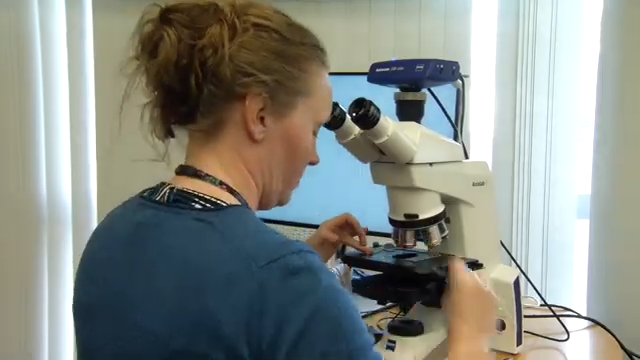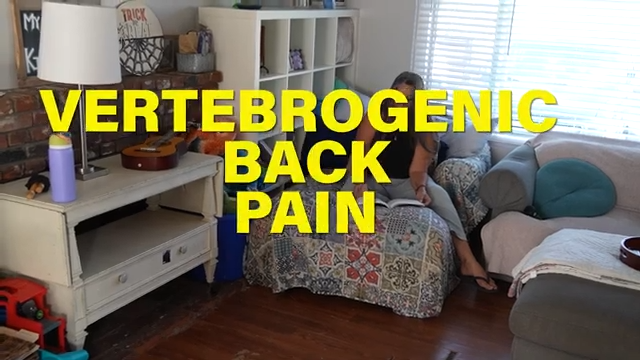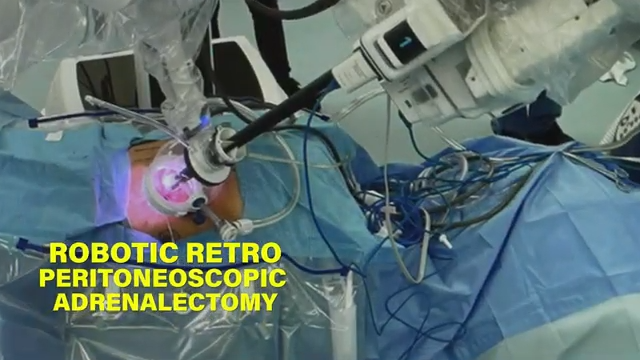New York, N.Y. (Ivanhoe Newswire) – A congenital condition could mean a leg amputation for some kids, but a series of surgeries helped this nine-year-old get up on her feet. SUPERknee
Fibular hemimelia is a rare condition that causes babies to be born without a bone, called the fibula, in one or both of their lower legs. As they grow, kids may not only have limbs that are different lengths, but they may also struggle with foot and knee deformities. A New York orthopedic team is using a series of surgeries, including a procedure called the SUPERknee, that creates stability so kids can be kids.
Leila Ricks loves to dance, hip-hop, and TikToks!
She’s come a long way in the past year. Leila was born without a fibula bone in her leg so, they were two different lengths, and her foot was out of place.
Leila tells Ivanhoe, “I couldn’t keep my legs straight or flat because if I did, my ankle would be all the way down here, my hip would be all the way down here, and I would be like a fashion model.”
For some kids with this rare disorder, amputation is sometimes the option. Instead, pediatric orthopedic surgeons mapped out a series of surgeries for Leila. They started with a leg lengthening procedure, breaking the tibia bone in her right leg, and attaching a frame to carefully stretch it.
“My husband and I would have to turn it according to the prescription that they gave us. We would have to turn the rods and the rods would push the bone farther apart,” Leila’s mom, Keri Ricks, mentions.
This active little girl was confined to a wheelchair and then a walker for eight months as she recovered.
Leila was also missing two knee ligaments, her ACL and PCL, so after leg lengthening, doctors performed what they called a SUPERknee surgery.
“We used her own soft tissue on the outer side of the leg and rerouted it through the knee in order to reconstruct both of those ligaments,” pediatric orthopedic surgeon at Mount Sinai, Sheena Ranade, MD, explains.
Right now, Leila’s happy to be getting around, and playing with her puppy, Macy.
“Now, I’m confident because my doctor said I can do stuff now,” Leila exclaims.
Doctors say it’s likely that Leila may have more surgery in her future. In addition to another limb lengthening surgery, doctors may also perform what they call a SUPERankle procedure, which would help them stabilize her ankle, which is not as sturdy as a normal ankle since she is missing her fibula.
Contributors to this news report include: Cyndy McGrath, Producer; Kirk Manson, Videographer; Roque Correa, Editor.
To receive a free weekly e-mail on medical breakthroughs from Ivanhoe, sign up at: http://www.ivanhoe.com/ftk
Source:
https://www.limblength.org/conditions/fibular-hemimelia/
MEDICAL BREAKTHROUGHS
RESEARCH SUMMARY
TOPIC: SUPERKNEE SURGERY AND MORE KEEPS LEILA DANCING
REPORT: MB #5039
BACKGROUND: The SUPER knee is a surgery performed to increase stability in a person’s leg. This surgery is just one lateral incision and uses already existing ligaments to help strengthen that person’s leg. It is commonly combined with SUPER hip, which is a combination of surgeries to correct sever deformities in someone’s bone and soft tissue. SUPER is an acronym for Systematic Utilitarian Procedure for Extremity Reconstitution. This procedure aims to realign the kneecap, correct flexion contracture, and missing ligaments such as ACL and PCL. At the end of the procedure the patient is required to have internal wires to pin the knee for six weeks to keep the leg straight. After that time, the wires are removed, and they move onto the next step. Each Procedure has the same steps, but those steps are customized to the patient. The SUPER knee procedure was created in 1995 by Dr. Paley. He also invented the SUPER hip procedure in 1997.
(Source: https://paleyinstitute.org/blog/conditions/congenital-femoral-deficiency/treatment-strategies/superhip/#/, https://paleyinstitute.org/blog/conditions/congenital-femoral-deficiency/treatment-strategies/superknee/#/)
CONDITIONS: If it is the case where the condition is discovered at birth, then doctors will perform genetic testing using the child’s saliva and matching it to a specific gene. One condition where they do this is called diastrophic dwarfism. The children born with this condition usually have smaller limbs than normal and doctors will use the child’s saliva to try and match it with the SLC26A2 gene. If the condition is found later in life consultations will include an X-ray, MRI, CT scans, and sometimes a scan called EOS which is a three-dimensional scan of someone’s entire body. Other conditions where the SUPER knee procedure is needed include fibula hemimelia and other skeletal and joint abnormalities.
(Source: https://paleyinstitute.org/blog/conditions/diastrophic-dwarfism/treatment-strategies/#/)
SUCCESS OF THE SUPERKNEE: The SUPER knee along with its sister surgeries, the SUPER hip and ankle, have helped so many different people of all ages. In a meta- analysis done by Elmherig et al in 2020 he reviewed 211 patients with fibular hemimelia 120 of them underwent amputation and the other 91 underwent limb reconstruction. It was discovered that there was a bigger satisfaction with the limb reconstruction then there was with amputation because of the reconstruction techniques that have been reinverted to correct the deformities. In his series in 2011 with 38 patients that had fibular hemimelia 94.7% of patients achieved excellent function result. Adults were employed and most were involved in recreational and competitive activities.
(Source: https://www.ncbi.nlm.nih.gov/pmc/articles/PMC8229539/)
FOR MORE INFORMATION ON THIS REPORT, PLEASE CONTACT:
Stacy Anderson
If this story or any other Ivanhoe story has impacted your life or prompted you or someone you know to seek or change treatments, please let us know by contacting Marjorie Bekaert Thomas at mthomas@ivanhoe.com




